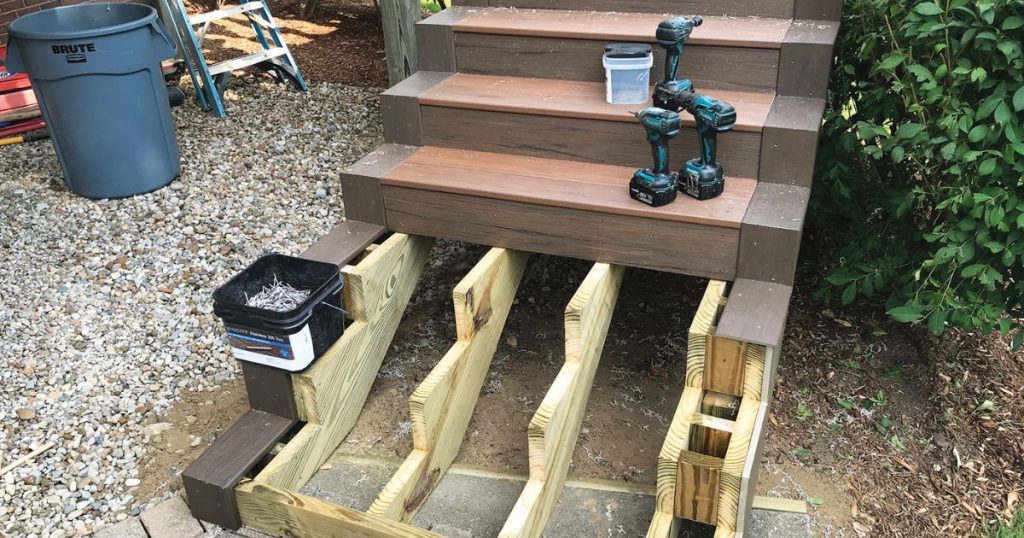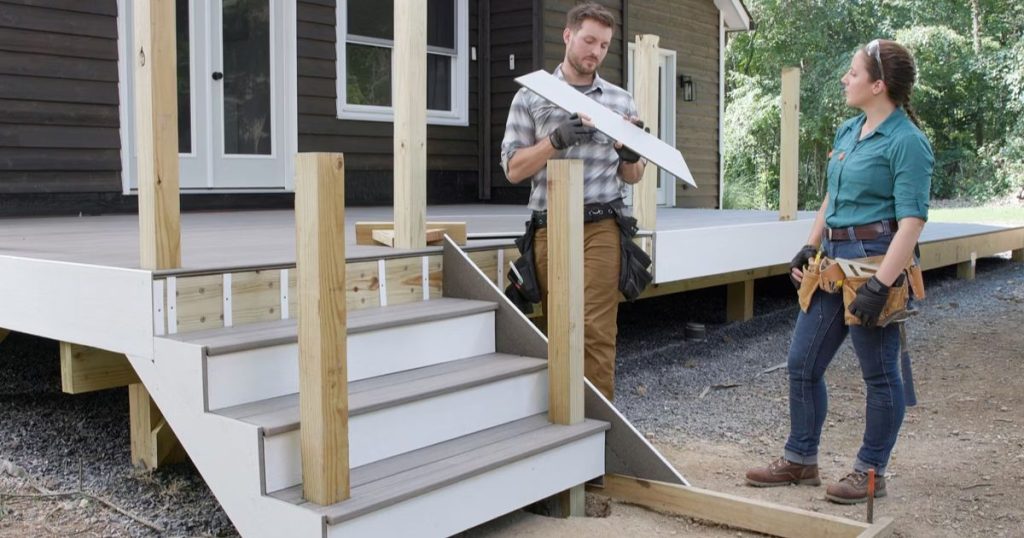Stronger Deck Stairs: DIY Guide to Safe and Smart Outdoor Steps
Let me be straight with you—deck stairs might look like a simple part of your home, but they’re actually one of the most critical areas when it comes to safety. I’ve seen too many cases where poorly built or maintained stairs cause accidents, sometimes serious ones. And honestly, it’s not just about avoiding falls; it’s about making sure your family and guests feel safe every time they step outside.
When I build or repair stairs, I focus on strength and durability because these stairs take a lot of wear and tear—from weather, constant foot traffic, and sometimes even heavy loads. If you ignore these factors, you’re inviting trouble.
In this article, I’m going to walk you through the expert tips I’ve learned over the years, so you don’t have to guess or take unnecessary risks. Whether you’re a DIY enthusiast or a pro builder, you’ll find practical advice to build stairs that last and keep everyone safe. Ready? Let’s get started.
Understanding Deck Stairs Basics: Key Components and Terminology
Before you dive into building or fixing deck stairs, it’s important that we’re on the same page about the basics. I’ve noticed that many people skip this step and then get stuck or make mistakes later on. So let’s clear the confusion upfront.
Deck stairs are made up of a few key parts, and knowing these will help you understand what goes where and why. First, you’ve got the stringers—these are the diagonal supports that hold up the steps. Think of them as the backbone of your stairs. Then come the treads, which are the flat parts you step on, and the risers, the vertical space between each tread. Some stairs have open risers, but closed ones add extra safety and stability.
Handrails and guardrails are equally important, especially for safety. Handrails give you something to hold onto, while guardrails prevent accidental falls off the sides.
According to experts at Fine Homebuilding, following standard measurements for stair dimensions is crucial. The height of each riser and depth of each tread should be consistent throughout the staircase to ensure safe and comfortable use. This also helps in complying with local building codes, which often have strict guidelines for deck stairs.
By understanding these basic components and their roles, you’ll be in a much stronger position to build or inspect your stairs with confidence. Trust me, it saves a lot of hassle down the line.
Expert Tips for Building Strong and Durable Deck Stairs

When it comes to building deck stairs, strength and durability aren’t negotiable. I’ve learned the hard way that cutting corners here can lead to expensive repairs—or worse, accidents. So, here’s what I always do to make sure stairs stand the test of time and use.
First, choose the right materials. Pressure-treated lumber is a classic choice because it resists rot and insect damage. Composite materials are another option if you want low maintenance, but be sure to check their strength ratings. Don’t skimp on hardware either—use galvanized screws and metal brackets designed specifically for outdoor stairs.
Next, measure twice, cut once. Precision in your measurements and cuts isn’t just about neatness; it’s about safety. Incorrect stringer spacing or uneven risers can cause trips and weaken the structure. Generally, you want to space stringers no more than 16 inches apart for proper support.
Also, make sure your stairs are securely anchored. The connection points between the stairs and the deck, as well as where the stairs meet the ground, need solid anchors to prevent movement over time.
And a big one—avoid the common mistakes I often see: undersized stringers, loose fasteners, or skipping braces. These small errors add up to big safety risks. Take your time with each step, and don’t rush.
Enhancing Safety: Features You Should Never Skip
Building strong stairs is one thing, but adding safety features is what really protects you and your loved ones. I never overlook these because they’re the difference between a nice deck and a safe deck.
Start with handrails. They’re not just decorative—they give you something to hold onto and help prevent falls. Make sure your handrails are installed at the right height and are sturdy enough to support weight.
Then there’s the non-slip surface. Especially if your stairs get wet, adding grip tape, textured paint, or rubber stair treads can save you from slips. I personally prefer non-slip strips because they’re easy to install and effective.
Lighting is another game changer. Installing staircase lighting ensures you don’t miss a step at night, especially if you entertain outdoors after dark.
Finally, guardrails and balusters aren’t just for looks—they’re crucial if your deck is raised more than a couple of feet. These prevent accidental falls off the side and should follow local safety codes.
Skipping any of these features can turn a solid deck into a hazard, so don’t cut corners here.
Have you faced any challenges while building or repairing your deck stairs that we haven’t covered here? Share your experience in the comments so we can all learn together!
Maintenance Tips for Long-lasting Deck Stairs
Building strong stairs is just the start—you’ve got to keep them in good shape if you want them to last. I can’t stress enough how regular maintenance saves you time, money, and headaches down the line.
Start with a simple inspection routine every few months. Look for signs like cracked wood, loose nails or screws, and any wobbling. Catching these early means you can fix them before they get worse.
Cleaning your stairs regularly is important too. Dirt and moisture can speed up rot and wear. Use a gentle brush and a mild detergent, especially if you have wooden stairs.
Once or twice a year, seal or stain your wood stairs to protect them from weather damage. If you’re using composite materials, just follow the manufacturer’s cleaning advice—they usually need less work.
If you spot minor damage, don’t ignore it. Tighten loose fasteners, replace worn-out treads, or reinforce weak spots quickly. Trust me, a small repair now prevents bigger problems later.
If you’re renovating your deck stairs, keep an eye out for unexpected problems like hidden doors like a man discovered a terrifying secret door during home renovation
Common Mistakes to Avoid When Building Deck Stairs

I’ve seen plenty of folks, even experienced builders, make these mistakes that compromise safety and durability. Avoiding them will save you a lot of trouble.
Skipping local building codes is a big no. These codes exist for a reason—following them means your stairs will be safe and legal.
Watch out for using wrong materials or hardware. Cheap or incorrect fasteners might seem like a money saver but can cause your stairs to fail prematurely.
Poor measurements and uneven steps are surprisingly common. Even small inconsistencies can cause trips and falls. Always measure carefully and double-check before cutting.
Don’t ignore drainage and weather effects. Water pooling around your stairs accelerates rot and weakens supports. Make sure your stairs have proper drainage and consider weather-resistant materials.
By steering clear of these pitfalls, you’re already a step ahead in building safer, stronger deck stairs.
Bonus: Pro Tips and Tricks from Industry Experts
Here’s where I share some insider tips I picked up from pros and experienced builders—things you won’t always find in basic guides.
Many experienced deck builders and carpenters on Twitter and other platforms emphasize the importance of using metal stair brackets to reinforce stringers. These small but powerful additions can significantly boost the strength of your stairs without adding much cost.
Another tip is about testing your stairs before finalizing. Pros sometimes use a simple method: apply firm pressure or jump gently on the steps to check for any flex or wobble. If you feel movement, it’s a sign you need stronger support or better fastening.
Also, some builders recommend using hidden fasteners to prevent rust and increase durability, especially in humid climates. It keeps your stairs looking clean and lasting longer.
Lastly, consider design tweaks like slightly wider treads or slightly lower risers for extra comfort—small changes that make a big difference in daily use.
Which safety feature do you think is the most important when building deck stairs? Drop your thoughts below—I’d love to hear from you!
Final Thoughts
Now that you’ve got these expert tips and practical advice, you’re well on your way to building deck stairs that are not just strong but truly safe. I want you to feel confident every time you step outside, knowing your stairs can handle whatever comes their way—be it heavy foot traffic, rain, or just everyday wear and tear.
Remember, good stairs aren’t just about looks; they’re about protecting your loved ones and yourself. Take your time, follow these guidelines, and don’t hesitate to ask for help if something feels tricky.
So, what’s your next step? Are you ready to start building safer deck stairs today? Or maybe you’ve already faced some challenges with yours—feel free to share your experiences or questions. I’m here to help.
If you found these tips helpful, be sure to follow me for more home improvement ideas. I’m looking forward to your questions and feedback!
Disclaimer: This article is for general informational purposes only and does not replace local building codes or professional advice. Always follow your local regulations and consult a professional if in doubt. The author is not responsible for any injury or damage resulting from the use of this information.


